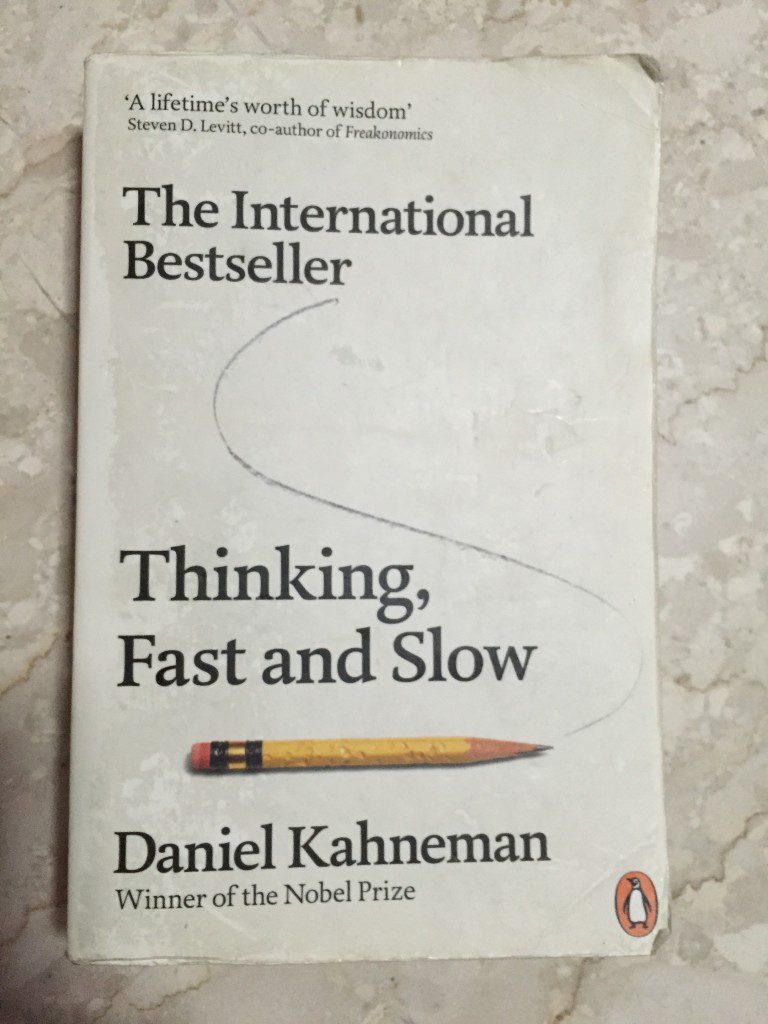
Should you buy this book? Yes.
Should you borrow this book? Of course. Preferably this is so that you can discuss it with someone who’s already read it.
“Thinking, Fast and Slow” by Daniel Kahneman is an exploration into how human beings and the thought processes that shape our unconscious biases. It covers human psychology and how we, as humans, might be more aware about how we make decisions and whether or not they are logical or rooted in emotion and prejudice. It’s a book based on a lifetime of research, and like economics, is all about common sense, quantified.
I’d heard about this book many times, and been urged to read it by several people. I’ve kind of held off on it because it sounded slightly pretentious and didactic, and the last thing I really wanted to read was an old man’s advice on how I’ve been thinking wrongly all this while. I was pleasantly surprised to find that it was hardly as disagreeable as that – in fact, it was more of a series of observations that led to an undeniable conclusion. Presented in this manner, and sharing in the author’s revelation helped in accepting the ideas that he presented. And ultimately, this is a book that I should have read earlier so that I could have benefitted more from it.
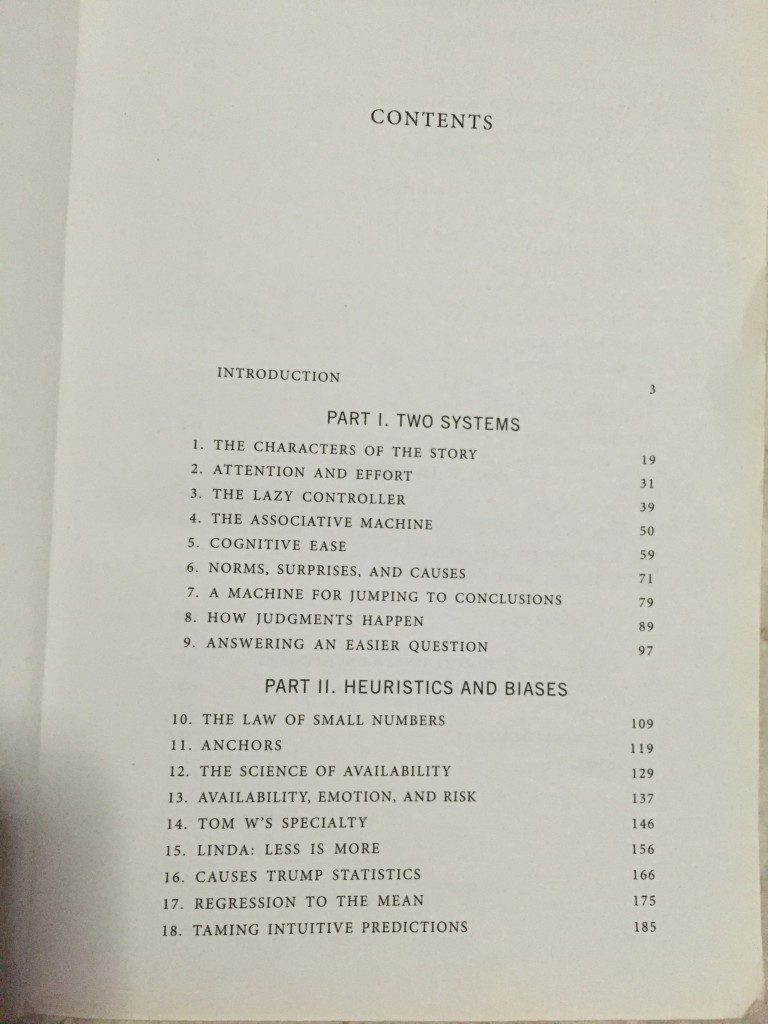
Highlights
Organised and detailed
The chapters build upon each other, stage by stage, into a solid narrative flow. It gives a clear big picture, so you understand where the book is going at any one time, even if you might need to re-read the chapter you’re on for greater clarity. Despite the density of its material, you never get a feeling that the book has lost you.
Backed by solid research
The one most impressive aspect of the book is how it’s backed by mound of research (along with a Return of the King-length appendix of the studies they’ve conducted behind). There are some anecdotal examples used, don’t get me wrong in this instance. The human element is definitely present. But these examples come after the facts and statistics have been presented, and are more of a supplementary story of the principles and findings they’ve illustrated.
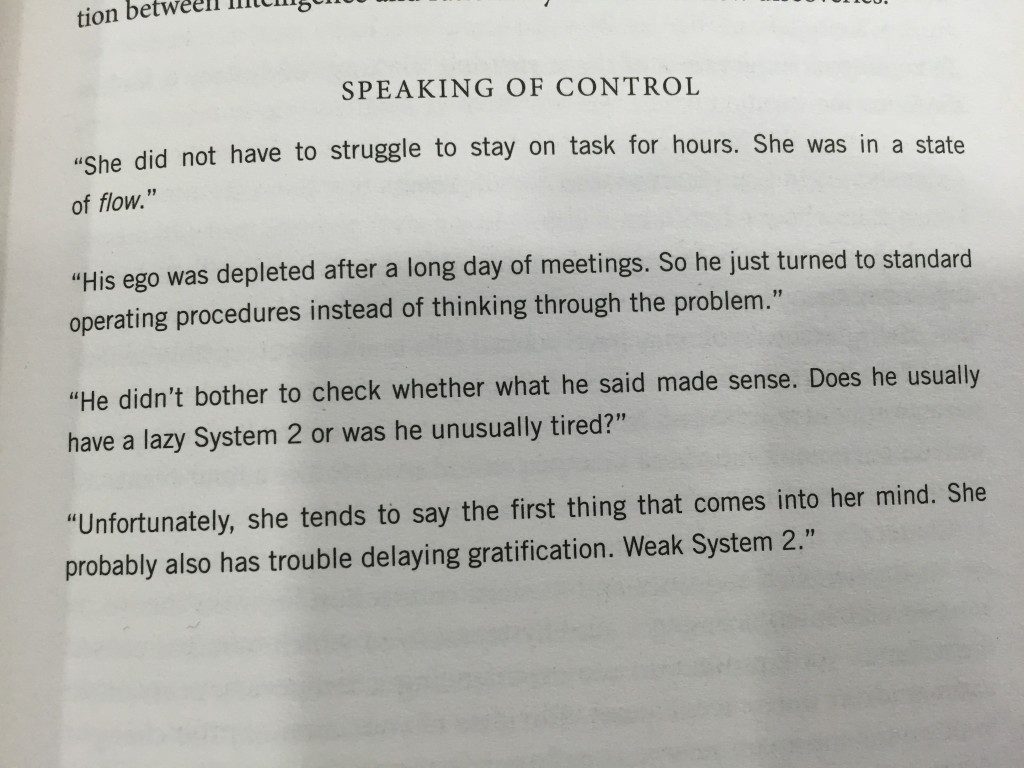
One sentence examples at the end of each chapter
Because the material is so dense, it takes immense concentration to get through each chapter. Fortunately the chapters are self-contained, but to fully understand the arguments you need to remember what has been established within the chapter itself. What the book does to aid in your understanding is to have a few one sentence examples at the end of each chapter to give you a more visual illustration of what the chapter is about. This is incredibly useful, and helps to round up the ideas of each chapter.
Goes from the micro to the macro
I like how the book goes from smaller rules and observations, to larger concepts and real world applications and examples of the types of thinking we do. As mentioned before, this logical flow helps with the understanding of the deep material presented, and ultimately contributes to how much you benefit from the book. And that’s what we read books for, right? To gain knowledge and insight.
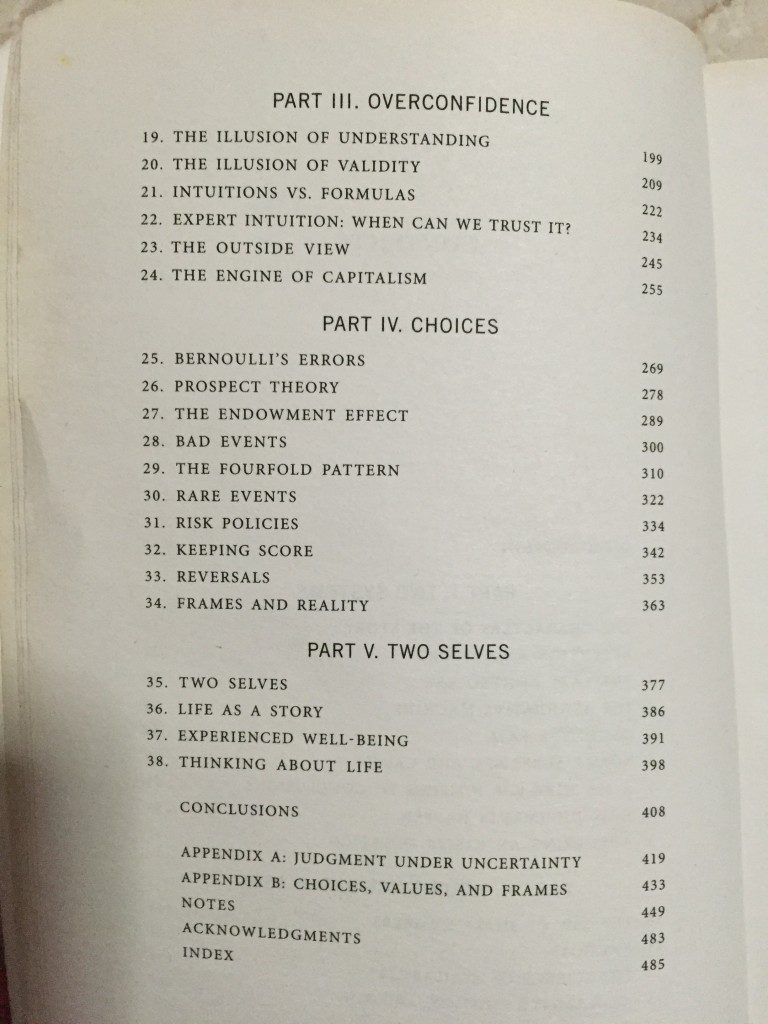
Letdowns
Not for casual reading
This is not a book for light reading. If you take a break in the middle of a chapter, it’s likely that you’ll need to browse through what you’ve read before when you pick up again. It really requires you to synthesise what it postulates, rather than just passive absorption. Otherwise when you come to the later chapters, you’ll be probably be lost in the references to early concepts.
Also, the material is dense. Because of the huge amount to cover, the author doesn’t repeat facts or truths that have already been established. You have to truly know and remember what has been said in the book for you to continue forth.
Doesn’t really have a call to action
Despite leading towards a definite conclusion, the book leaves it to you, as to what you will do with this new insight into your character. But then again, there’s no one action that can cater to the diverse audience that has picked up this book. Still, I would have liked the book to have given us some action steps, or at least a plan to help us watch our thinking and develop stronger problem formulation strategies.
Awareness is the first step though.
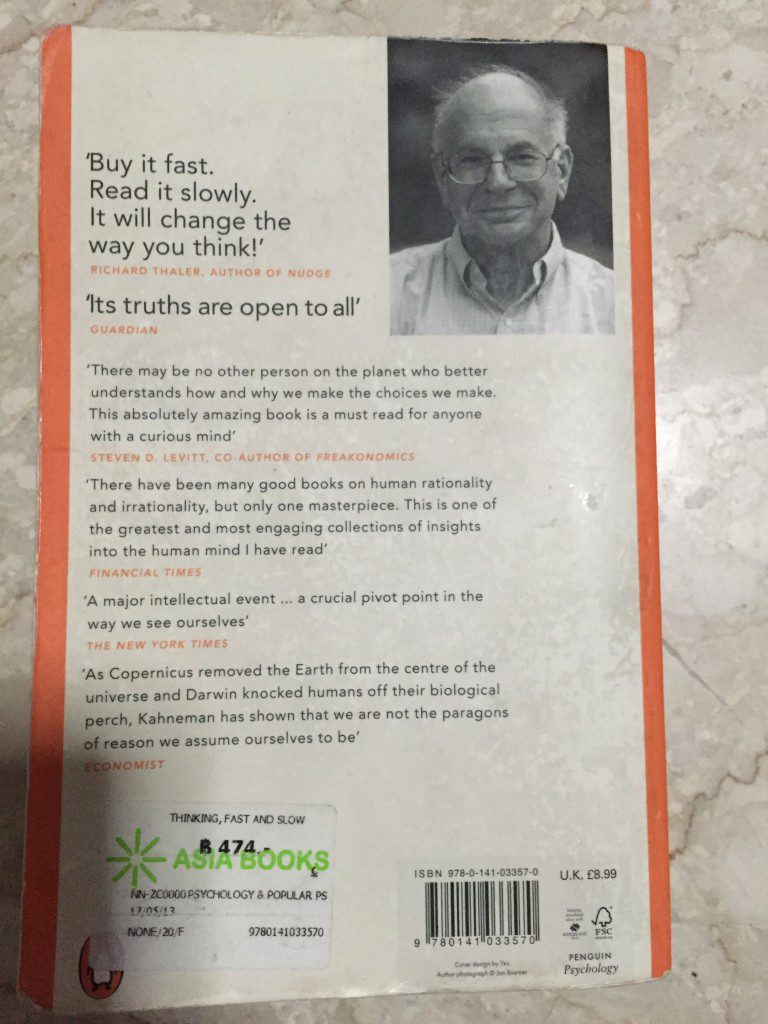
“Thinking, Fast and Slow” is one of the better books that that pioneer a new way of thinking and a slower, more cautious and rational way of decision making. To be able to execute this though, you’ll need a certain level of self-awareness and humility, which is not something that everyone can achieve. One thing at a time though – being able to identify your own gaps in ability is already a huge boon, and one that you might not have thought to consider had you not read this book.
Leave a Reply